The world of natural acne remedies continues to get bigger and bigger. While many dermatologists continue to hand out the same Accutane they’ve always administered, often to painful side effects, there’s an entire natural universe out there which is expanding like a huge unstoppable blob.
That said, there’s a long way to go, many frontiers which still haven’t been explored, frontiers which could lead to all your pimples disappearing. Here are the next futuristic acne developments which we’re hoping to see soon…
One – bacterial superstrain
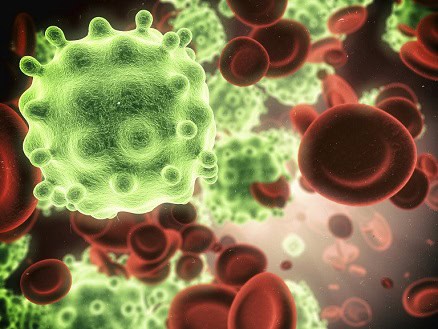 There are thousands of sub-strains of bacteria on human skin and it’s possible that at least one, unknown to science, has miraculous properties which bring all the acne-causing strains to their knees. Our knowledge on p.acnes, staphylococcus epidermidis, s. aureus and co has advanced massively over the last 15 years. We know of their general roles, like p.acnes consuming our oil using lipases and churning out inflammatory by-products, but also substrains which are protective like family III.
There are thousands of sub-strains of bacteria on human skin and it’s possible that at least one, unknown to science, has miraculous properties which bring all the acne-causing strains to their knees. Our knowledge on p.acnes, staphylococcus epidermidis, s. aureus and co has advanced massively over the last 15 years. We know of their general roles, like p.acnes consuming our oil using lipases and churning out inflammatory by-products, but also substrains which are protective like family III.
We know of competitive interactions between different bacteria, like S. epidermidis producing a peptide called epidermin which targets p.acnes. We know of interactions with natural skin compounds like glycerol, which s. epidermidis ferments to produce succinic acid, which infiltrates p.acnes cell membranes.
New facts are discovered constantly, like how vitamin B12 only causes some p.acnes strains to produce inflammatory porphyrins, and not others. Sometimes there’s so many new skin bacteria facts that it’s impossible to know what to do with them.
But somewhere in this whirlwind, there could be a bacteria form that’s fine-tuned for everything. One that combines all powers scattered around into a single strain with disproportionate benefits for acne patients. This could even be applied in a handy cream one day. Maybe it’s p.acnes strain SBZ92.1 – some name nobody has laid eyes on yet. There’s so many forms to research that this discovery is a long way off, but this prophecy could come true one day, and we’re keeping our fingers crossed.
Two – super anti-stress food
 Lowering stress is easier said than done for acne. Telling someone to “calm down” rarely works. Practising slow steady breathing works for a couple of minutes until your mind wanders and you forget about it. It’s not as easy to forget stressful exams or a failed job interview as it sounds on paper.
Lowering stress is easier said than done for acne. Telling someone to “calm down” rarely works. Practising slow steady breathing works for a couple of minutes until your mind wanders and you forget about it. It’s not as easy to forget stressful exams or a failed job interview as it sounds on paper.
That’s why for acne patients, biological stress hacks are very important. These are tricks which disable the surging stress hormones behind acne using more dependable nutrition and supplements – ones which aren’t controlled solely by racing thoughts.
The most trusty are vitamin C and magnesium, the top 2 nutrients for controlling the hormone cortisol. But what still hasn’t appeared, and what could be on a supermarket shelf one day, is a single food that’s amazing for stress. A food fine-tailored by nature for optimising all stress hormones and neurotransmitters at once.
Plenty of foods have individual powers, just not several at once. Pineapple and honeydew melons contain a sprinkling of serotonin, which could top up your brain’s natural supply. Pomegranates may lower cortisol slightly by accelerating the conversion to its less active form cortisone. Dark chocolate contains the bliss compound anandamide, but probably increases epinethrine and norepinethrine if you eat too much (50-60 grams daily is fine).
There has to be a food out there which is unbelievable as a biological stress hack which scientists haven’t pinpointed. Maybe it’s one that we know about already, like pineapple, except that research has only focussed on one narrow area so far. Someone might have feasted on pineapple in Thailand, felt oddly peaceful for that day, and assumed it was just the relaxation of being on holiday, not making the connection. Who knows?
Three – direct coffee/chocolate link
 Coffee and dark chocolate are classic foods which vary between individuals. Some can eat them freely, while others report random breakouts. There’s obvious factors for both, like the sugar found in lower cocoa chocolate, or the stress hormone spike caused by caffeine. Yet the bad reactions are so random that I believe that the two have a direct effect on acne which hasn’t been identified yet.
Coffee and dark chocolate are classic foods which vary between individuals. Some can eat them freely, while others report random breakouts. There’s obvious factors for both, like the sugar found in lower cocoa chocolate, or the stress hormone spike caused by caffeine. Yet the bad reactions are so random that I believe that the two have a direct effect on acne which hasn’t been identified yet.
Recently we discussed one direct connection which had long laid hidden – that alcohol metabolises into fatty acid ethyl esters which directly cause oily skin. It’s quite likely that coffee/dark chocolate have a similar hidden link to acne that we don’t know about yet.
Their two stimulants, caffeine and theobromine, are almost identical structurally. Maybe these stimulants can bind to p.acnes somehow, making it more aggressive. Maybe caffeine/theobromine increase very specific pro-inflammatory chemicals like neutrophils. I’m sure that a surprising new discovery will appear soon. For now though, don’t be scared of coffee or dark chocolate, as many acne patients can tolerate them easily.
Four – more genes
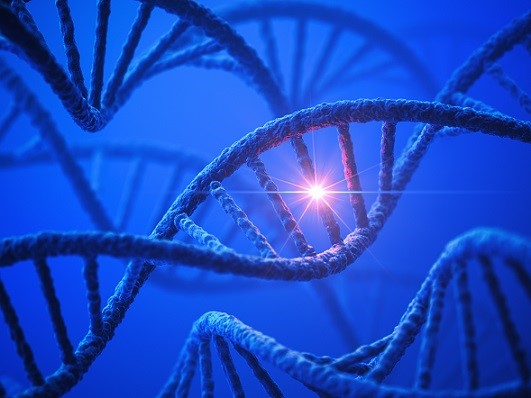 We’ve already identified a few genes connected to acne, but there’s no doubt that this is the tip of the iceberg. Everything about your existence is controlled by genetics – the shape of your fingernails, the length of your tongue.
We’ve already identified a few genes connected to acne, but there’s no doubt that this is the tip of the iceberg. Everything about your existence is controlled by genetics – the shape of your fingernails, the length of your tongue.
Genes affecting responses to alcoholic beverages have been identified, like the ALDH allele typically found in east Asians, which reduces their ability to control alcohol’s toxic metabolites. Coffee has several, including mutations in CYP1A2 genes, which metabolise caffeine, and therefore affects its half life.
There’s the ADORA gene controlling the drowsiness neurotransmitter adenosine; some people have differently shaped brain receptors which make it harder for caffeine to block. Another caffeine-related gene is PDSS2. Why does this matter? Coffee is a beloved beverage, so no wonder the genetics are extensively researched, but those discoveries are so subtle that there’s bound to be genes affecting acne patients in all manner of areas.
These genes could be anything. Right now, we’ve confirmed genetic differences in the size of skin pores, allowing some to be blocked more easily. What if some people have receptors in their sebaceous glands which are more responsive to testosterone? What if some people’s immune systems produce more neutrophils in response to p.acnes bacteria, but not other inflammatory chemicals? What if some genes reduce the amount of vitamin E directed to the skin? If we knew, we’d be able to tell those people to apply more topical vitamin E. The day is coming when more acne-related genes are discovered, we just don’t know when.
Five – super apples (or other fruit)
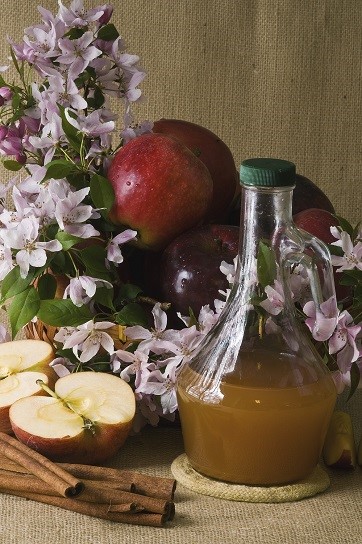 Apples have an estimated 2000 varieties worldwide. A handful of staples account for over 50% of global production, like Royal Gala, Golden delicious, pink lady and Braeburn. These are tried and tested for their sharp crispy tang, each year beating down false pretenders which attempt to dethrone them. But there’s likely hundreds of varieties worldwide which only appear in one village or wooded valley.
Apples have an estimated 2000 varieties worldwide. A handful of staples account for over 50% of global production, like Royal Gala, Golden delicious, pink lady and Braeburn. These are tried and tested for their sharp crispy tang, each year beating down false pretenders which attempt to dethrone them. But there’s likely hundreds of varieties worldwide which only appear in one village or wooded valley.
Each rare apple has a different composition of phytonutrients, which could be to an acne patient’s reward. Quite simply, there could be a super apple out there somewhere. An apple with a supercharged array of compounds tailored perfectly for extinguishing acne.
The average apple can be relied upon for a nice reduction in inflammation and supply of polyphenol antioxidants. What if a rare apple variety triples or even quadruples those powers? One better than average apple is the annurca apple, grown in central Italy since the Roman era 2000 years ago. This has extremely high ursolic acid concentrations compared to normal.
Apples have numerous other phytonutrients which could become supercharged, like ferulic acid, chlorogenic acid, and procyanidins. Fruits and herbs aren’t usually ways to clear your acne all at once. You have to combine multiples ones like a jigsaw so they add up to create a large improvement. Yet there may be one apple variety out there capable of creating huge improvements all by itself. Maybe it’s the annurca apple we just discussed. We can’t tell by opening a scientific textbook; studies have never tested apples themselves on acne when eaten, let alone individual varieties.
Six – chemical nemesis
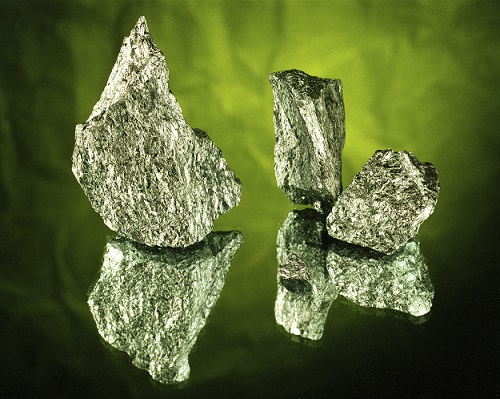 Just as a super apple might exist, or maybe a super blueberry, there might be the opposite – a toxin with unique acne-causing abilities. Pesticides, chemicals and heavy metals are an unfortunate fact of life in the 21st century. We’re exposed to hundreds, so testing them all thoroughly is impossible.
Just as a super apple might exist, or maybe a super blueberry, there might be the opposite – a toxin with unique acne-causing abilities. Pesticides, chemicals and heavy metals are an unfortunate fact of life in the 21st century. We’re exposed to hundreds, so testing them all thoroughly is impossible.
One of the most consistent dangers of environmental toxins is cranking up inflammation. Another is depleting the protective antioxidant glutathione, which is involved with detoxification pathways. But weirder, unique dangers pop up too. Lead became infamous for lowering children’s IQs when they chewed on toys containing it, or grew up in houses with lead paint.
Aluminium overdoses are linked to disfiguring blotches and rashes. Overdose on arsenic and you can expect hardened, crusty sores known as hyperkeratoses. I believe that one, two, maybe three chemicals exist out there with a unique ability to worsen acne.
It might be a chemical which people have heard of, but nobody suspected. Propyl paraben, atrazine – the possibilities are endless. It might be one which 70% of makeup users are exposed to. If this chemical exists, then some might not be sensitive, but it could be an absolute nightmare in a handful of people.
Seven – a topical treatment which blocks androgen receptors
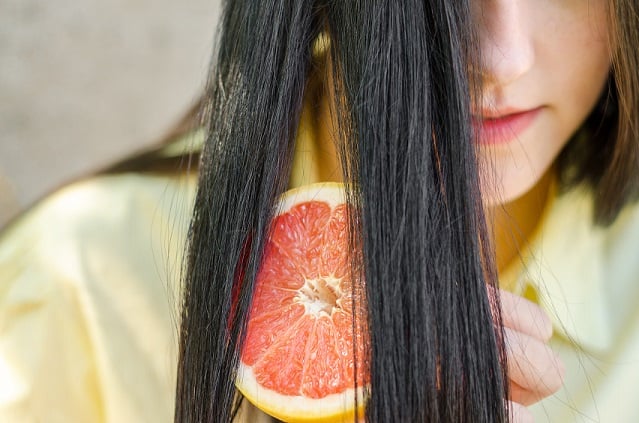 Everyone knows that androgens like testosterone and DHT cause acne, and they work by binding to receptors in the sebaceous glands and increasing their sebum (oil) output. So there’s an obvious question – why not just block those receptors? There’s a great chance that such a compound exists in nature.
Everyone knows that androgens like testosterone and DHT cause acne, and they work by binding to receptors in the sebaceous glands and increasing their sebum (oil) output. So there’s an obvious question – why not just block those receptors? There’s a great chance that such a compound exists in nature.
I don’t recommend lowering androgens because they’re important for wider health. Many great compounds function by blocking a receptor, so that the substance it was created for cannot bind and exert its effects. Caffeine increases wakefulness by occupying adenosine receptors in the brain, which prevents the drowsiness hormone adenosine from binding. Away from acne, you have snake venoms, like the black mamba, which causes paralysis using neurotoxins which block acetylcholine receptors in muscle cells which receive brain signals.
While we have anti-androgenic topical treatments, most of them function by blocking the conversion of testosterone to DHT by lowering the 5-alpha reductase enzyme. This includes green tea, licorice, saw palmetto. This is great to have, but blocking receptors would be particularly cool, effectively muscling into somewhere they don’t belong and preventing the confused and bewildered DHT from gaining access.
One we know about is estrogen, which binds to receptors instead of testosterone. But it would be cool to find a random plant compound which slotted in neatly, which could just be rubbed into the skin. This would appear somewhere as mundane as cucumbers, or as exotic as Thai black ginger.
Eight – the mysteries of sweat
 As of 2024, sweat is one of the more mysterious substances of the human body. Think it’s just a cooling liquid designed to keep us from critical system overheat during intense exercise? Guess again – sweat contains various bioactive compounds, including the antibacterial peptide dermcidin, which may inhibit the p.acnes bacteria behind acne.
As of 2024, sweat is one of the more mysterious substances of the human body. Think it’s just a cooling liquid designed to keep us from critical system overheat during intense exercise? Guess again – sweat contains various bioactive compounds, including the antibacterial peptide dermcidin, which may inhibit the p.acnes bacteria behind acne.
This study on alcohol made me think about sweat’s connection to acne more widely. It found a disturbing chain of events: some alcohol you drink is secreted through sweat, explaining why a frowning wealthy dowager can smell it on you. Skin bacteria ferment the alcohol and produce toxic acetaldehyde in response, adding inflammation to the skin. So what if healthy compounds produce healthy by-products instead?
For example, you eat a plate of raw onions for lunch like some rustic old farmer. The antioxidant quercetin rises and is secreted in sweat. Maybe bacteria can ferment quercetin and produce an acne-killing super compound. After all, Staphyloccocus epidermidis ferments glycerol in the skin and produces antibacterial succinic acid.
Maybe the resveratrol in red grapes is fermented after being delivered through sweat, and becomes a shield that protects all collagen against free radical destruction. The peptides in sweat could explain why people’s facial bacteria becomes unbalanced. If bad p. acnes strains and good ones lived on our skin for thousands of years, our bodies may know which is which. Sweat peptides like dermcidin may target malicious ones. But if you rarely sweat through lack of exercise, or living in a cold place, this system won’t come into force.
For now, these are just theories. Some people even sweat less than others in certain places. People lacking the genetic distribution of sweat glands on their face may be benefitting less than others.
Nine – lipases/biofilms
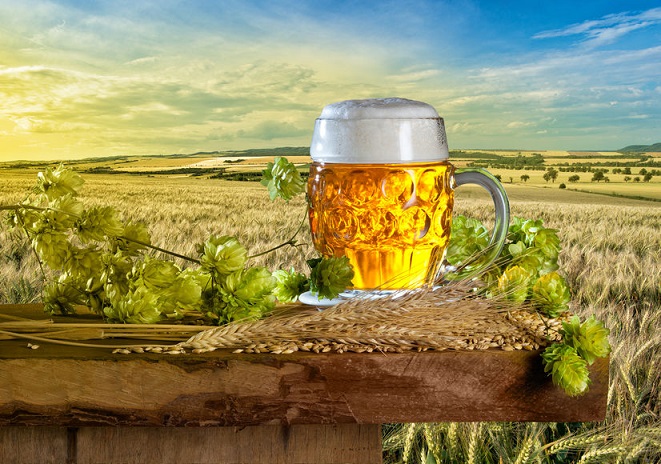 Another cool feature we’re scouring the natural acneverse for is anti-lipase and anti-biofilm remedies. There’s plenty of remedies which produce a basic reduction in p.acnes bacteria, including honey and tea tree oil. But there’s an advanced, futuristic level beyond this where you can accurately alter certain aspects of p.acnes, like pressing a switchboard with on-off buttons.
Another cool feature we’re scouring the natural acneverse for is anti-lipase and anti-biofilm remedies. There’s plenty of remedies which produce a basic reduction in p.acnes bacteria, including honey and tea tree oil. But there’s an advanced, futuristic level beyond this where you can accurately alter certain aspects of p.acnes, like pressing a switchboard with on-off buttons.
Lipases are enzymes which p.acnes needs to survive. They digest sebum (oil) on the skin for energy, which is why p.acnes thrives in clogged pores. This process produces inflammatory by-products which fuel acne, but a 2019 study found that the South African bush twig impepho can disable the lipases produced by p.acnes cells.
The beer herb hops has been found to do the same. This makes existing p.acnes gentler, rather than massacring them in a big mess of cytoplasm. Then there’s biofilms, the hardy structures formed using glycolax slime which link p.acnes and make them ever harder to eradicate. To destroy biofilms, you need a weapon forged in legends – you can’t rub in any old remedy. Like with lipases, it’s just a trickle now, but remedies are appearing, with one being impepho again. These twigs are sold in bundles in African marketplaces, and burnt as incense to summon the spirit of ancestors while sacrificing a goat.
Right now we’re living in the stone age, but in 10 years, there will be more of these subtler, stealthier antibacterial remedies.
